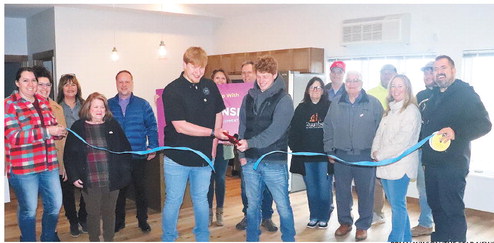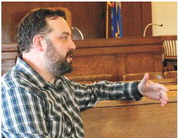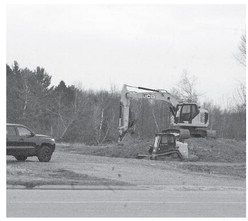Don’t generate trouble during power outages
Wisconsinites know that with spring, comes an increased chance of experiencing thunderstorms, tornadoes and flooding. Having a generator on hand, whether portable or permanent, may sound like a great idea for times when the power goes out, but misusing one is dangerous.
Although they can help light the home or cool perishable food when the neighborhood is dark, if used incorrectly, there could be a much bigger problem than no electricty. As the spring season approaches, Jump River Electric Cooperative wants to remind people of important safeguards when operating a generator.
When using a portable version, there are two ways to connect it to a home. The first way is with a powered circuit panel that has a power transfer switch, which monitors incoming voltage from the utility line. The circuit panel and transfer switch should always be installed by a qualified electrician.
The second option is to plug in a limited number of home appliances directly into a fuel-powered portable generator, with heavy-duty extension cords.
Never try to power the home by plugging a generator into a wall outlet. This is known as backfeeding, and it could electrocute a neighbor or an electric lineman working to restore power.
A permanent generator must also have a transfer switch installed by a qualified electrician to avoid back feeding. Because of the harm an incorrectly powered generator can cause, the transfer switch is required by the National Electrical Code.
The primary hazards of using a portable generator are not pretty. They include carbon monoxide (CO) poisoning from the toxic engine exhaust, electric shock or electrocution, and fire, according to the Federal Emergency Management Agency (FEMA).
According to the agency, most deaths and injuries associated with portable generators are from CO poisoning, when generators are used indoors or in partially enclosed spaces. A permanent or standby generator also has significant risks if not installed by a qualified electrician. Installing one is extremely dangerous and definitely not a DIY project.
The following safeguards should be taken when using a generator:
• Operate a portable generator in well-ventilated locations outdoors, away from all doors, windows and vent openings to avoid carbon monoxide poisoning. The instructions that come with it are not meant for the recycle bin. Read and follow them; they are important.
• Turn the generator on before using it. Once it’s running, turn appliances and lights on one at a time, to avoid overloading the unit. Generators are for temporary use and limited load; prioritize needs.
• Never use a generator in a puddle or standing water, and never touch with wet hands.
• To protect a portable generator from moisture, operate it on a dry surface under an open, canopy-like structure.
• Never use or install a generator in an attached garage, even with the door open.
• Turn off portable generators and let them cool down before refueling. Never refuel a generator while it is running.
• Store fuel for a portable generator in a container that is intended for the purpose and is correctly labeled as such. Store the containers outside of living areas.
• Keep children and pets away from all generators, especially portable ones. Many generator components are hot enough to burn someone during operation.
Using a generator is serious business and shouldn’t be done in haste. To learn more about using electricity safely and efficiently, visit SafeElectricity.org.




